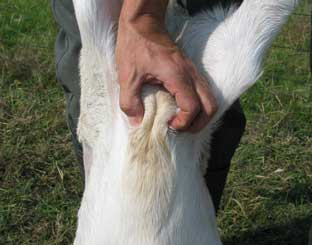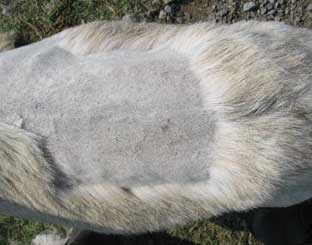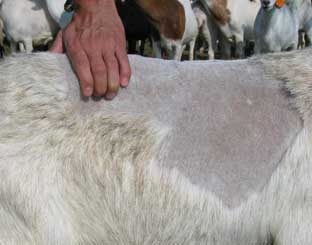Description
Visual aspect of the goat: Slightly raw-boned. The backbone is still visible with a continuous ridge. Some ribs can be seen and there is a small amount of fat cover. Ribs can still be felt. Intercostal spaces are smooth but can still be penetrated.
The spinous processes of the lumbar vertebrae are evident and can still be grasped between the thumb and forefinger; however, a muscle mass can be felt between the skin and the spinous process. There is an obvious depression in the transition from spinous to transverse processes.
The hand can grasp the transverse processes but the outlines of the transverse processes are difficult to see. About one-third to one-half of the length of the transverse processes is discernible.
Sternal fat is wider and thicker but can still be grasped and lifted by the thumb and forefinger. The fat layer can still be moved slightly from side to side. Joints are less evident.





To compare these BCS side-by-side, go to http://www2.luresext.edu/goats/research/bcs.html
Reference: Detweiler, G., T. Gipson, R. C. Merkel, A. Goetsch, and T. Sahlu. 2008. Body Condition Scores in Goats. Pages 127-133 in Proc. 23rd Ann. Goat Field Day, Langston University, Langston, OK.
